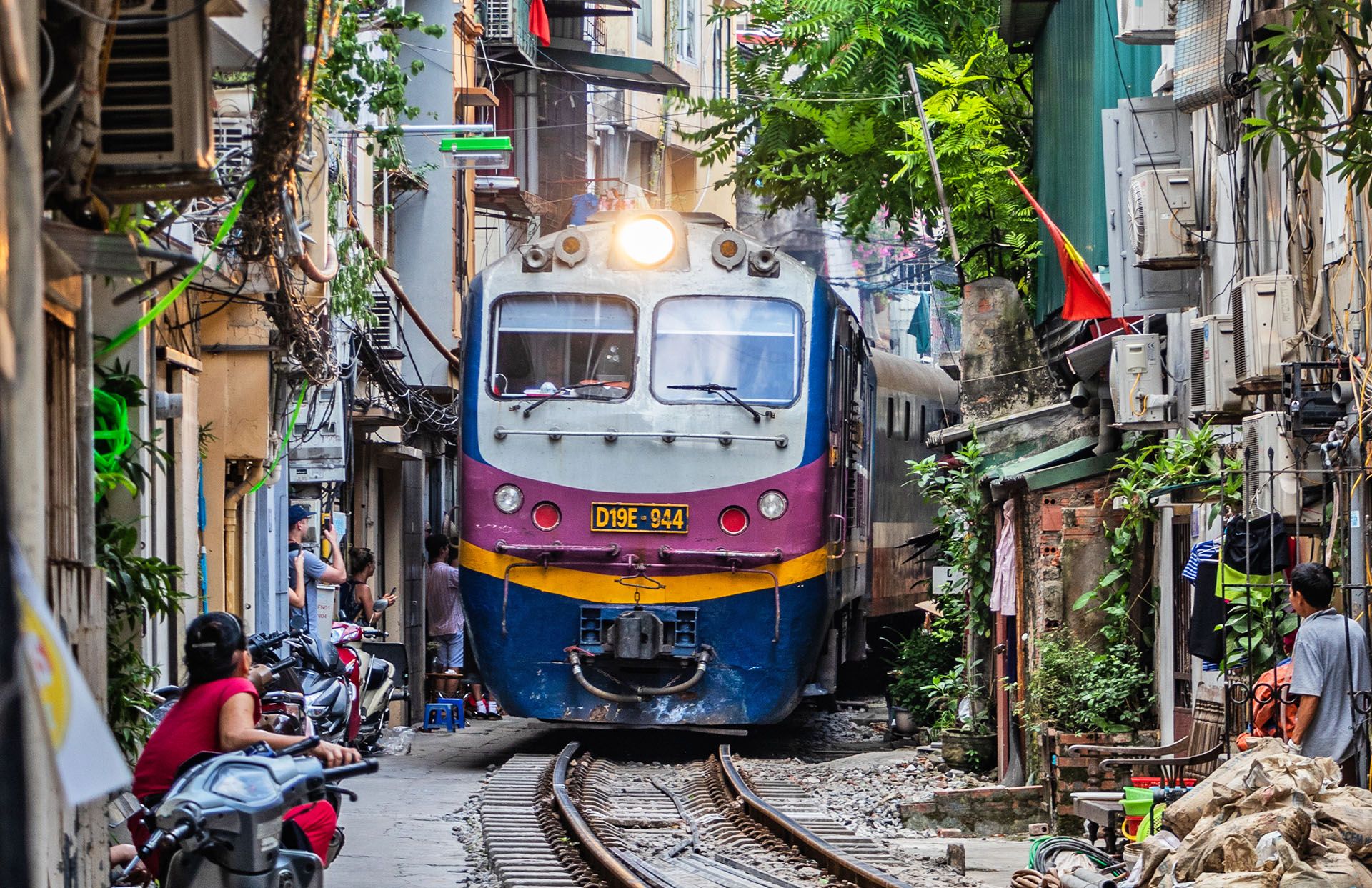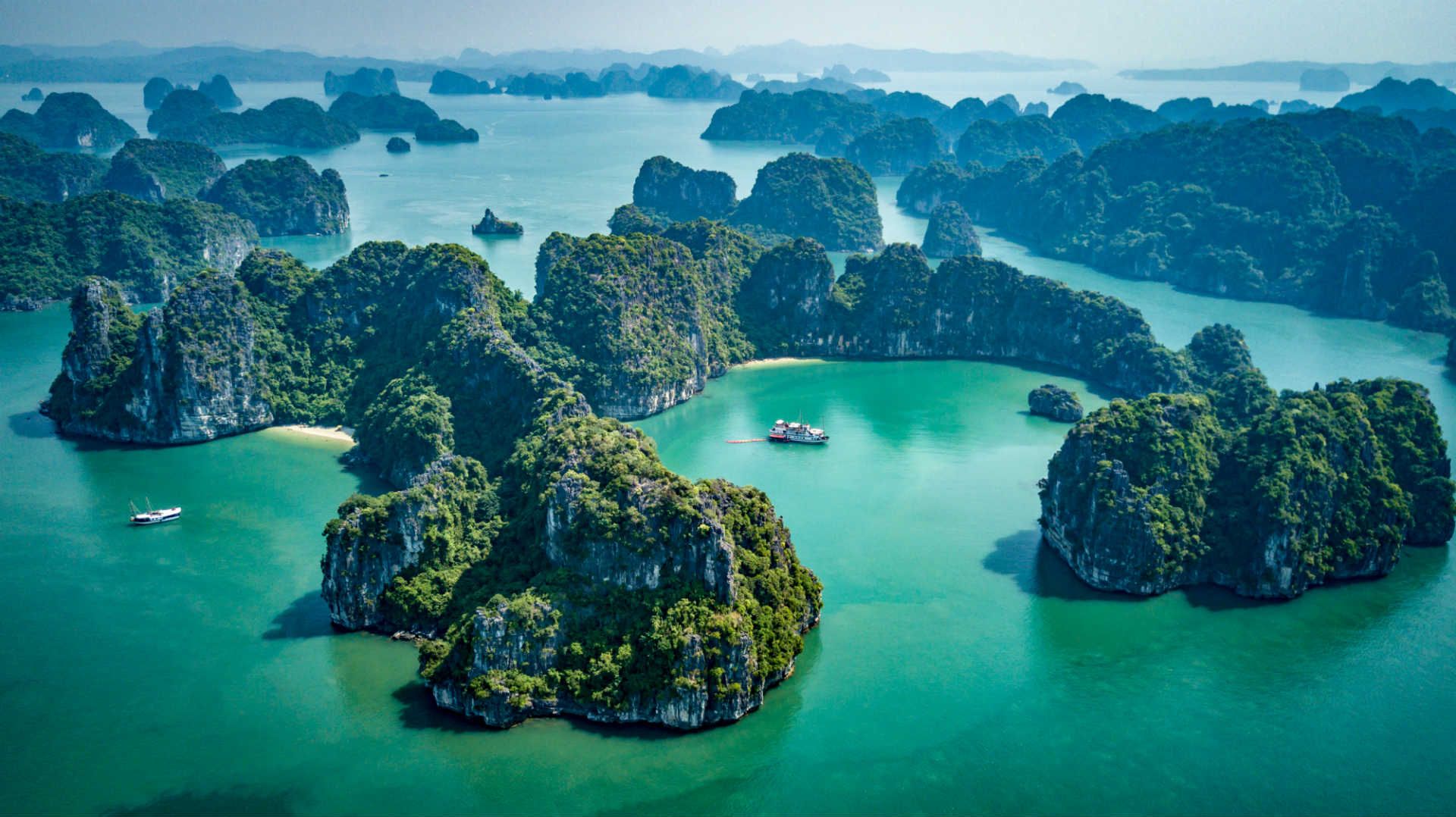Day 3: Halong Bay by water
Halong Bay is one of Vietnam’s most iconic sights, with nearly 2,000 limestone islands rising out of green waters. A UNESCO World Heritage Site, it’s a place shaped over millions of years, filled with dramatic karsts, caves, and hidden lagoons. Despite the daily influx of boats, the scale of the bay means there are still plenty of peaceful spots to enjoy.
Overnight cruise
Spending the night on a boat is one of the best ways to experience Halong Bay. The key is picking the right cruise. Evening trips let you enjoy the bay after the day boats have left, while two-night cruises can take you farther out to Bai Tu Long Bay or Lan Ha Bay, where things feel even more remote.
Smaller boats (12-18 cabins) can access less crowded areas and narrow passages, while larger boats offer more stability in rough weather and usually have more amenities. If you don’t want to follow the boat’s schedule, you can always do a day trip and stay overnight in Halong City to explore at your own pace.
How to pick a cruise
Look for options with smaller group sizes, routes to quieter areas, and operators that support sustainable tourism. Some popular choices include:
Also, think about your cabin’s location: lower deck rooms are less prone to motion but have limited views, while upper cabins have better views but more movement.
Kayaking
Kayaking is one of the highlights of visiting Halong Bay. Most cruises offer guided sessions, and mornings are the best time to spot wildlife like macaques or sea eagles. Some caves and lagoons are only accessible at certain tide levels, so it’s worth asking about timing. Even if you’re new to kayaking, the calm waters here make it easy.
Floating villages
Halong Bay is home to a few floating villages, with Cua Van being the largest. About 300 residents live here, supporting themselves through fishing and pearl farming—traditions that have been passed down for generations. If you visit early, you can catch the floating market, where locals trade their catch.









